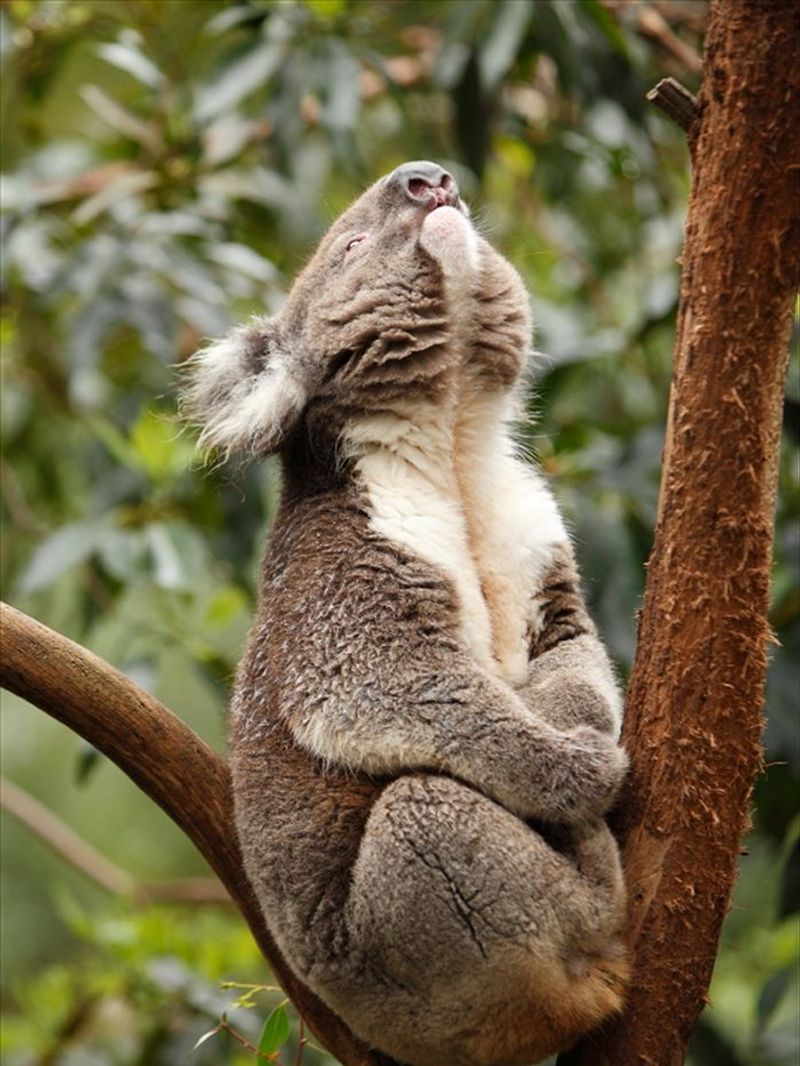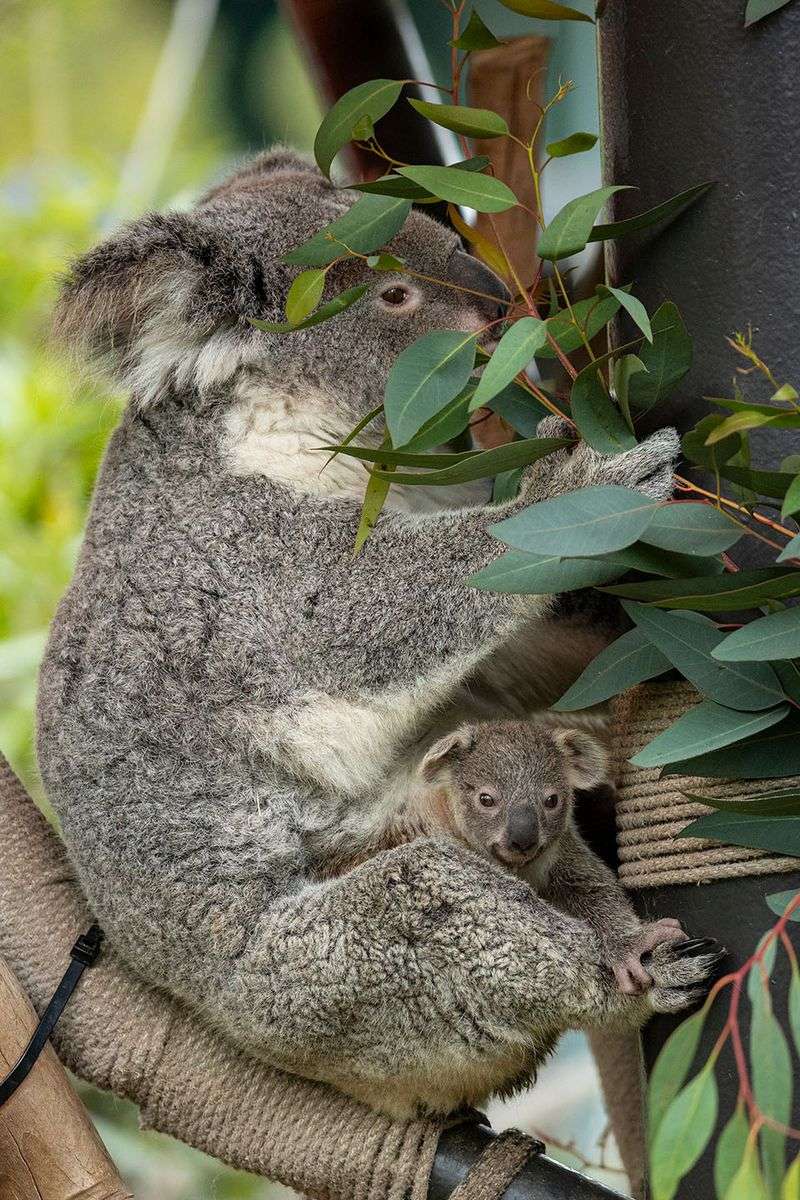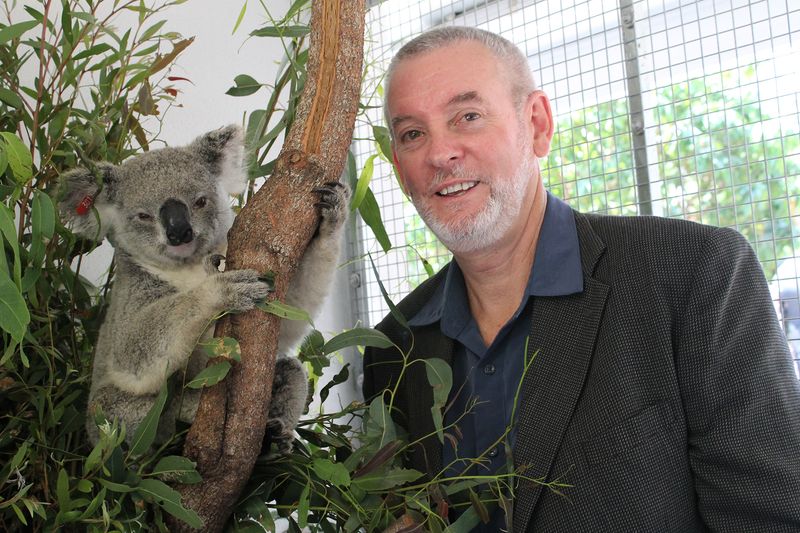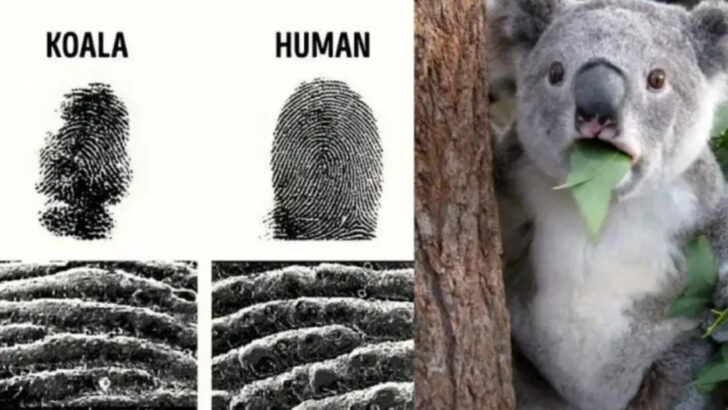They could literally get away with a crime. Koalas don’t just nap in trees and munch eucalyptus leaves—they also have fingerprints so eerily human, even seasoned detectives could be fooled. No joke. These fluffy marsupials are packing one of nature’s most bizarre secrets, and that’s just the beginning. From criminal-level fingerprints to digestive systems that deserve their own science award, koalas are weirder—and more wonderful—than most people realize. Get ready to meet the tree-dwelling oddballs who might just be more like us than we ever expected. Here are 5 facts about koalas that’ll leave you wide-eyed and saying, “Wait… what?!”
Human-like Fingerprints

Koalas possess fingerprints that are eerily similar to those of humans. These spirals and loops can confuse forensic experts, making it almost impossible to distinguish them from human prints.
Found mainly on their front paws, these fingerprints aid in gripping eucalyptus branches as they climb. Nature’s design ensures they have a firm hold in their arboreal habitat.
Interestingly, koalas and primates are the only mammals with such intricate fingerprint patterns. This remarkable similarity is a testament to convergent evolution, where unrelated species develop similar traits independently. Amazing, isn’t it?
Eucalyptus Diet

Koalas have a diet that consists almost exclusively of eucalyptus leaves. These leaves are toxic to most animals, yet koalas have evolved to thrive on them.
Their specialized digestive system breaks down the toxins, allowing them to consume up to a kilogram of eucalyptus leaves daily. With over 600 varieties of eucalyptus, koalas are selective, choosing only a few species.
This diet can affect their energy levels, leading to long periods of rest, sometimes up to 20 hours a day. Talk about a sleepy yet fascinating existence!
Unique Vocalizations

Koalas communicate using a range of vocalizations, from soft grunts to loud bellows. These sounds are crucial during the mating season, helping males establish dominance and attract females.
The bellows are surprisingly deep for their size, resembling the sound of a large animal. This unique trait is due to a special vocal organ that amplifies their calls.
In addition to mating calls, mothers communicate with their joeys using gentle clicks and soft hums. Their vocal repertoire is as diverse as it is intriguing, offering a symphony of sounds in the wild.
Joey’s Development

A newborn koala, known as a joey, is as tiny as a jellybean and completely dependent on its mother. Born blind and earless, it crawls into the mother’s pouch immediately after birth.
Inside the pouch, it continues to develop, nursing on its mother’s milk for about six months. Once strong enough, it ventures out but stays close, riding on the mother’s back.
This journey from a vulnerable newborn to an independent young koala is a marvel of nature. Each stage of development highlights the incredible bond between mother and joey.
Conservation Challenges

Koalas face significant challenges, primarily due to habitat loss and climate change. As urban areas expand, their natural habitats are fragmented, reducing their ability to find food and mates.
Bushfires pose another serious threat, destroying vast areas of eucalyptus forests crucial for their survival. Conservation efforts focus on preserving these habitats and ensuring safe corridors for koala movement.
Public awareness and support are vital for their conservation. By understanding and addressing these challenges, we can help secure a future for these iconic creatures.

